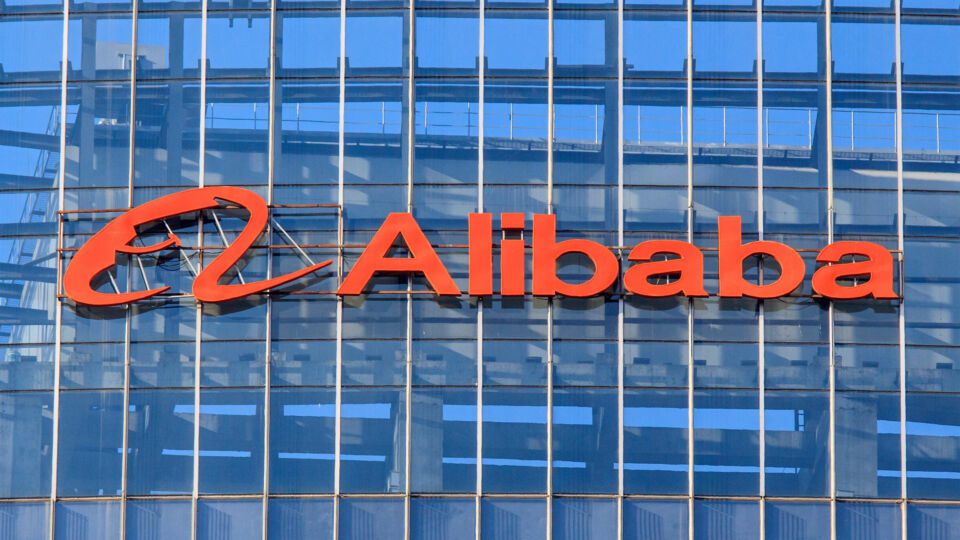The number of active users on Alibaba Group’s ecommerce platforms topped 1 billion for the first time in fiscal year 2021, but this milestone was tainted by the company’s first quarterly operating loss since it went public in 2014 — a result of the historic antitrust penalty levied against the company earlier this year.
The ecommerce giant posted a 7.7 billion yuan ($1.2 billion) loss in Q4 2021, which ended March 31, 2021. Excluding the $2.8 billion anti-monopoly penalty, quarterly net income would have increased 48% YoY to 10.6 billion yuan ($1.6 billion) on revenue of 187.4 billion yuan ($28.6 billion).
“During the past fiscal year, we have gone through all kinds of challenges, including the COVID-19 pandemic, fierce competition, as well as the antimonopoly investigation and a penalty decision by Chinese regulators,” said Daniel Zhang, Chairman and CEO of Alibaba Group on a call with analysts. “We believe the best way to overcome this challenge is to look forward and to invest for the long run, to create value for our customers through technology and innovation, and to solve major problems in society.”
Revenue for fiscal year 2021 (the 12 months ended March 31, 2021) was up 41% YoY to 717.3 billion yuan ($109.5 billion) buoyed by the consolidation of the Sun Art supermarket business, in which Alibaba took a controlling stake in October 2020. Excluding the Sun Art consolidation, revenue was up 32% YoY to 674.4 billion yuan ($102.9 billion).
“Our overall business delivered strong growth on a healthy foundation, with the Alibaba ecosystem generating a record $1.2 trillion in GMV during this fiscal year,” said Zhang in a statement. “We remain very excited about the growth of China’s consumption economy, which is benefiting from the acceleration of digitalization in all aspects of life and work. We will continue to focus on customer experience and value creation through innovation, as we pursue our mission to make it easy to do business anywhere in the digital era.”
Overall, online physical goods GMV grew 21% YoY in fiscal year 2021, driven primarily by the FMCG [fast moving consumer goods] and home furnishings categories. The company also pointed to increasing engagement among existing consumers as a growth driver. “The longer a consumer has shopped on our platforms, the more they spend through more orders across more product categories,” said the company in a statement. “In fiscal year 2021, average annual spending per consumer on our China retail marketplaces reached over 9,200 yuan ($1,404).”
Of the now 1 billion Alibaba active users in the last quarter, approximately 891 million were in China, while approximately 240 million hailed from outside the country. Those international customers are primarily using the AliExpress cross-border platform — which allows users to buy directly from Chinese manufacturers and distributors — and Lazada in Southeast Asia. Total revenue across the company’s international commerce retail business for the quarter was 9.5 billion yuan ($1.4 billion), an increase of 77% from the same quarter last year. The company said that this significant bump was due, in large part, to the substantial decline in that business during the same period last year, which coincided with the early stages of the COVID-19 pandemic.
In fiscal year 2021, approximately 70% of the company’s new annual active consumers in China came from less-developed areas, which has been an area of focus for Alibaba. The company highlighted its app platforms’ “appeal to a growing and increasingly diverse consumer base at various income levels,” and pointed to the Taobao Deals platform, which reached 150 million active users for the first time last year. “Taobao Deals continues to be an offering that attracts incremental users, especially in less developed areas, and we have seen robust retention rates given its clear value-for-money proposition and its expanding product selections in different categories,” said the company in a statement.
On the flip side of the coin, the company also pointed to “consumption upgrading” as a key business driver, highlighting the more than 200 luxury brands and retailers — including Cartier, Farfetch and Gucci — that now operate their flagship digital stores on its China retail marketplaces.
Other highlights from Alibaba’s results include:
- Freshippo — The company’s self-operated hypermarket chain Freshippo (known as Hema in Chinese) now boasts 257 stores (up from 202 in March 2020) and saw healthy same-store sales growth throughout the year.
- Taoxianda — The online-offline retail integration service solution for FMCG brands and third-party grocery partners aims to put Alibaba “at the forefront of transforming the retail industry by digitalizing all aspects of store-based operations.” Taoxianda drove Sun Art’s digitalization of its hypermarkets, with online representing 24% of Sun Art’s sales in fiscal year 2021, up from 17% in fiscal year 2020. In addition to Sun Art, Taoxianda helped 42 other retail chains open online stores and enabled more than 168 retail chains, supermarkets and marketplaces to digitalize their marketing programs.
- Livestreaming — The Taobao social commerce app enables merchants to engage with consumers through livestreaming, short-form videos, interactive games and microblogs. Among these, livestreaming is one of the fastest growing: Taobao Live GMV reached 500 billion yuan ($76.3 billion) in fiscal year 2021.
- Cloud Computing — As with its U.S. counterpart Amazon, cloud computing is big business at Alibaba. In 2020, Alibaba Group was ranked third globally and first in the Asia-Pacific region in the global Infrastructure-as-a-Service market, according to Gartner. In fiscal year 2021, Alibaba’s cloud computing revenue grew 50% YoY to 60.1 billion yuan ($9.2 billion).













